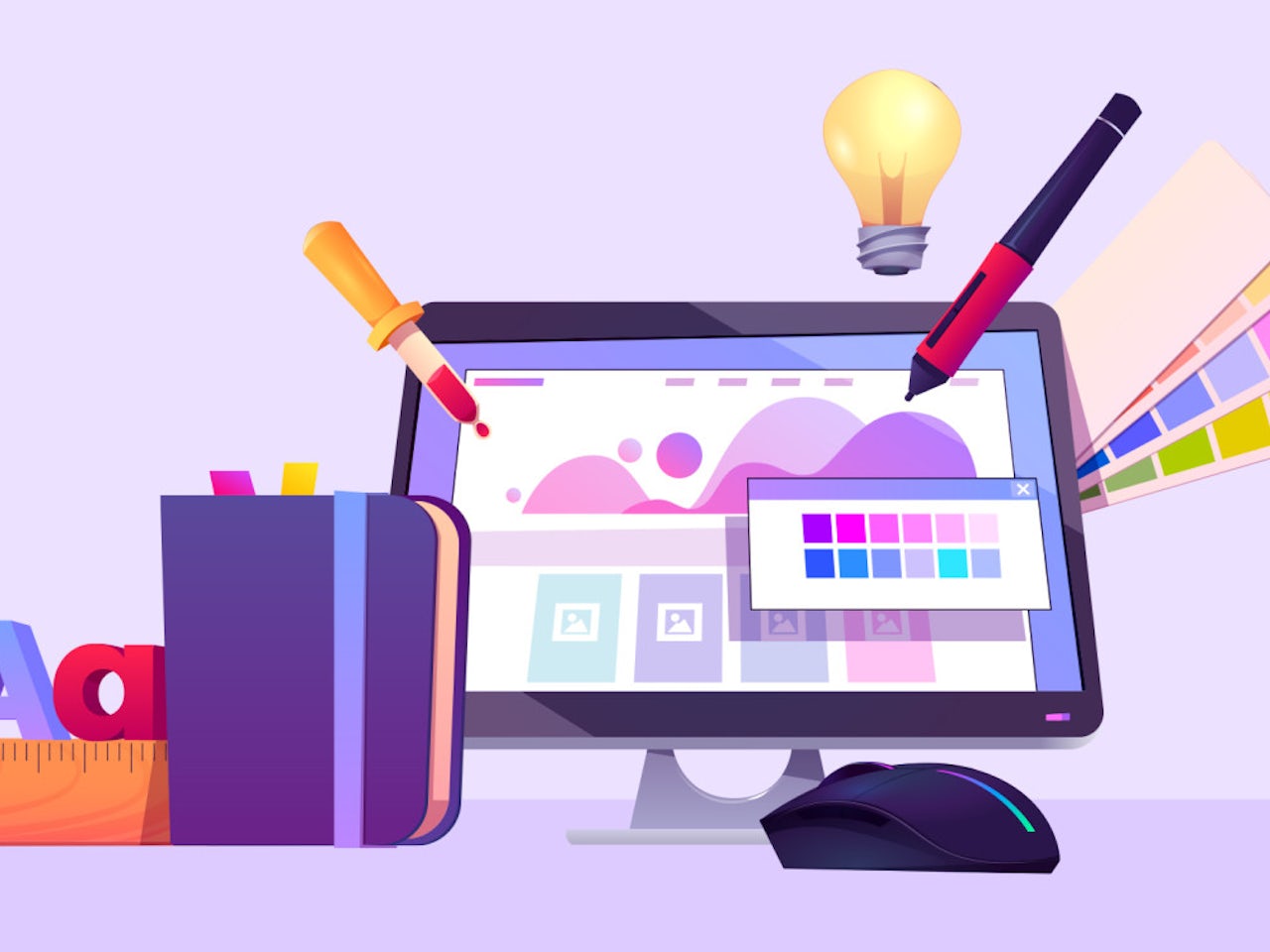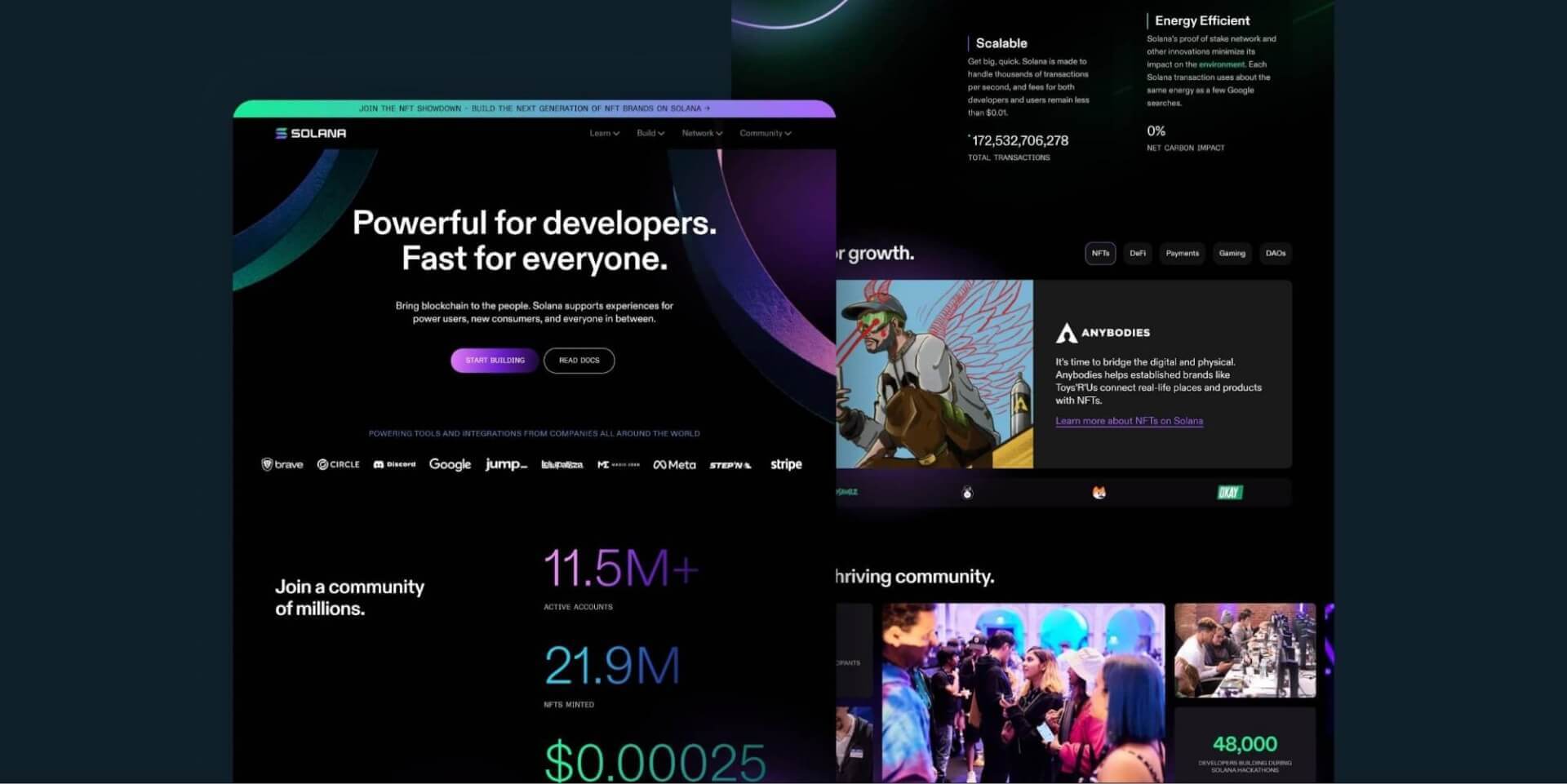Web Design London Ontario Solutions Designed to Your Brand
Web Design London Ontario Solutions Designed to Your Brand
Blog Article
Necessary Tips for Creating Stunning Website Design That Mesmerizes Visitors
When it pertains to website design, you're not just developing a website; you're crafting an experience for your site visitors. It is essential to understand that your target market is and what they desire. By focusing on individual experience and guaranteeing your design is both aesthetically appealing and responsive, you can make a substantial effect. There are more components to contemplate that can elevate your design even further. Let's explore those important pointers.
Understand Your Target Audience
Just how well do you really understand your target audience? Comprehending who your site visitors are is necessary for efficient web layout. Beginning by determining their demographics, passions, and discomfort points. Ask yourself what issues your web site can resolve for them. Use studies, analytics, and social media insights to collect valuable data.Once you have actually got a clear image of your target market, tailor your layout components to reverberate with them. Choose shades, fonts, and visuals that appeal to their choices. If your audience alters more youthful, consider modern, vibrant aesthetic appeals. For a professional crowd, a streamlined, minimal approach might work better.
Focus On Customer Experience
While you might have a sensational layout, it will not matter if your users can not browse your website easily. Prioritizing individual experience is vital for keeping visitors engaged. Beginning by assuring your site's format is intuitive. Usage clear headings, rational menus, and constant navigation components. By doing this, individuals can discover what they require without frustration.Next, concentrate on lots times. A slow-moving site can drive individuals away, so optimize pictures and decrease unnecessary scripts. Make certain your material is readable also-- pick legible fonts and maintain a great comparison between message and background.Don' t forget ease of access. Make certain that your design fits all individuals, consisting of those with handicaps. Use alt texts for images and give keyboard navigation options.Finally, test your website with real individuals. Collect feedback, recognize discomfort factors, and make modifications. By focusing on user experience, you'll develop a website that astounds and preserves site visitors.
Make Use Of Responsive Style
When creating your site, you can't overlook the significance of receptive design. By creating mobile-friendly layouts, applying liquid grid systems, and making use of media queries, you'll assure your website looks great on any type of tool. This strategy not only improves user experience but also boosts your website's ease of access.
Mobile-Friendly Layouts
Have you ever before tried steering a web site on your phone just to be irritated by little message and cramped designs? You're not alone, and that's why mobile-friendly formats are important. To keep your visitors involved, assure your internet site adapts seamlessly to various display sizes. Use versatile photos and scalable typography so material appearances terrific on any type of tool. Focus on touch-friendly switches and navigating to make surfing easy and intuitive. Bear in mind, a tidy, easy layout can enhance customer experience and motivate longer gos to. Examine your layout on different devices to recognize any type of concerns. By creating a mobile-friendly format, you'll not just enhance accessibility but likewise increase site visitor complete satisfaction, ultimately boosting your internet site's success. Do not ignore this vital facet of contemporary website design!
Liquid Grid Systems
Creating a mobile-friendly design establishes the phase for carrying out liquid grid systems in your website design. Liquid grids enable your design to adapt effortlessly to different screen dimensions, ensuring a constant experience for all users. Rather than dealt with pixel dimensions, use loved one devices like percents to define your design aspects. This approach assures that your layout stays symmetrical, despite the device.When making use of fluid grid systems, prioritize key web content positioning and readability. Damage your style into columns that can reorganize or stack based on the screen width. Keep in mind, the objective is to develop an aesthetically attractive interface that preserves capability throughout tools. By accepting fluid grids, you'll enhance user engagement and keep visitors mesmerized on any type of display.
Media Queries Use
Media queries are necessary tools in responsive website design, enabling your website to adapt to various gadgets and screen sizes. By utilizing media questions, you can use particular CSS guidelines based on tool characteristics like resolution, width, and height. This means your web site can look excellent on mobile phones, tablet computers, and desktops without endangering quality or usability.Start by defining breakpoints in your CSS that target various display sizes. You may readjust font sizes or format structures for smaller displays. Constantly evaluate your layout throughout different tools to assure ideal viewing experiences. Bear in mind, a receptive style not just boosts customer engagement yet also increases your site's search engine position. Accept media inquiries and view your website design beam!
Choose the Right Color Scheme
Selecting the right shade palette can make or damage your website design. Shades stimulate emotions and set the tone for your site, so it's essential to pick carefully. Beginning by recognizing your brand identity. If you intend to communicate depend on, think about blues; for excitement, choose for vibrant reds or yellows.Next, restrict your combination to three to 5 colors. Way too many shades can detract and overwhelm site visitors from your message. Usage devices like Adobe Color or Coolors to assist you discover unified combinations.Don' t ignore comparison; it boosts readability and guides users through your content. Make sure your message stands apart versus the background.Finally, take into consideration accessibility. Use color mixes that get along for color-blind individuals and make sure your site remains useful for every person. By choosing the appropriate shades, you'll create an inviting atmosphere that maintains site visitors engaged and encourages them to discover.

Include Visual Power Structure
To create a reliable web layout, you need to incorporate visual hierarchy. Start by specifying crucial elements plainly, making use of size and color to draw attention where it matters most. Constant designs will certainly assist assist your visitors, making it less complicated for them to navigate your material.
Define Secret Components Clearly
Visual hierarchy is essential in website design, guiding individuals via your content perfectly. To define crucial elements get more info clearly, prioritize what's essential. Usage subheadings and headings to develop a rational structure, making it very easy for visitors to check your website. Identify that your major message stands out, attracting attention without frustrating the customer. Damage up text with bullet factors or checklists to highlight substantial details, making it absorbable. Consistency in font choices and spacing additionally plays an essential duty in providing your content plainly. In addition, include whitespace efficiently to offer elements room to take a breath, helping individuals focus on each section. By specifying crucial components plainly, you improve the total customer experience and keep site visitors engaged.
Use Size and Shade
Specifying key elements clearly sets the stage for using size and shade efficiently. Initially, select a color combination that shows your brand identity and stimulates the best feelings. Use contrasting colors to attract attention to essential aspects like contact us to action. Next, leverage dimension to establish an aesthetic hierarchy; larger aspects normally draw in more interest. web design london ontario. For circumstances, headings should be noticeable and strong, while supporting text can be smaller and subtler. This combination guides visitors' eyes with your material, making navigating intuitive. Bear in mind, balance is vital-- as well several colors or large elements can overwhelm your audience. By attentively using size and color, you'll improve customer experience and keep visitors involved much longer
Implement Consistent Layouts
Creating a constant design across your website is vital for keeping a smooth customer experience. When site visitors experience an acquainted framework, they can navigate your site extra easily, maintaining their focus concentrated on your web content. Usage visual power structure to assist individuals via your pages. Prioritize crucial elements like headings, photos, and calls to action by differing colors and dimensions, which helps produce an user-friendly flow.Ensure your style aspects-- like switches, typefaces, and spacing-- are uniform throughout the site. This consistency fosters brand recognition and count on. Furthermore, arrange details rationally, so individuals can find what they need without frustration. Applying these approaches will certainly not only improve visual appeal however also urge visitors to stay longer and engage even more deeply with your content.
Enhance for Performance
To assure your web site runs smoothly and effectively, maximizing for performance is critical. Beginning by reducing your picture dimensions without sacrificing top quality. Use layouts like JPEG or WebP, and consider pressing photos prior to submitting. Next off, take advantage of browser caching to accelerate load times for returning visitors. By doing this, they will not need to download and install the very same sources every single time they see your site.Additionally, reduce the usage of hefty manuscripts and plugins that can reduce your site. Rather, go with light-weight choices that keep functionality without compromising speed. Implementing a Web Content Shipment Network (CDN) can additionally help distribute your material much more efficiently, minimizing latency for customers across various areas. Finally, consistently monitor your site's efficiency with tools like Google PageSpeed Insights, making required adjustments to ensure optimum tons times. By focusing on these facets, you'll create a quicker, a lot more reliable internet site that keeps site visitors involved.
Keep Web Content Fresh and Engaging
While a visually appealing layout captures focus, maintaining your content fresh and engaging is what truly holds site visitors on your website. Update your content routinely to mirror the most up to date fads, insights, and news in your industry. This not only boosts your reputation however additionally urges repeat visits.Use a variety of web content styles, like blog sites, infographics, and video clips, to cater to different choices. Engaging narration can make your message resonate more. Don't forget to communicate with your target market via surveys or remarks; this fosters a feeling of community.Incorporate user-generated content, like testimonials and reviews, to add authenticity. Make particular your material is simple to check out and aesthetically appealing by damaging it into absorbable areas. Finally, always keep your target market in mind. Customizing material to their requirements and interests will assure they remain involved and bought what you have to provide.
Often Asked Inquiries

What Tools Can I Make Use Of for Website Design?
You can make use of devices like Adobe XD, Sketch, and Figma for web design. They offer user-friendly interfaces and collaborative attributes. Do not fail to remember to check out Canva and WordPress for visually appealing and fast internet styles.
How Usually Should I Update My Web site's Style?
You should upgrade your web site's style every 1-3 years, or whenever substantial modifications happen in your brand or industry. Normal updates maintain your website fresh, interesting, and lined up with existing patterns to bring in visitors effectively.

Should I Employ a Professional or Design It Myself?
You need to consider your abilities and time. Developing it yourself can be rewarding if you're certain and have the resources. Employing an expert warranties polished results and saves you time for various other top priorities.
What Are Usual Web Style Errors to Prevent?
Stay clear of chaotic formats, inconsistent font styles, and bad navigation. Do not forget mobile responsiveness or forget to maximize loading speeds. Prioritize individual experience, ensuring your style's visually enticing and practical, so visitors remain engaged and explore even more.
Just How Can I Measure the Success of My Website Design?
To measure your website design's success, track user involvement metrics like bounce prices, session period, and conversion rates. Collect comments through studies and evaluate traffic patterns. Change your design based upon the understandings you gain. While you might have a stunning design, it will not matter if your customers can not navigate your website easily. When creating your site, you can not overlook the importance of receptive design. Bear in mind, a responsive style not only boosts customer interaction yet also increases your website's search engine position (web design london ontario). Visual power structure is vital in web design, assisting customers through your web content perfectly. To determine your web layout's success, track user interaction metrics like bounce rates, session period, and conversion rates
Report this page